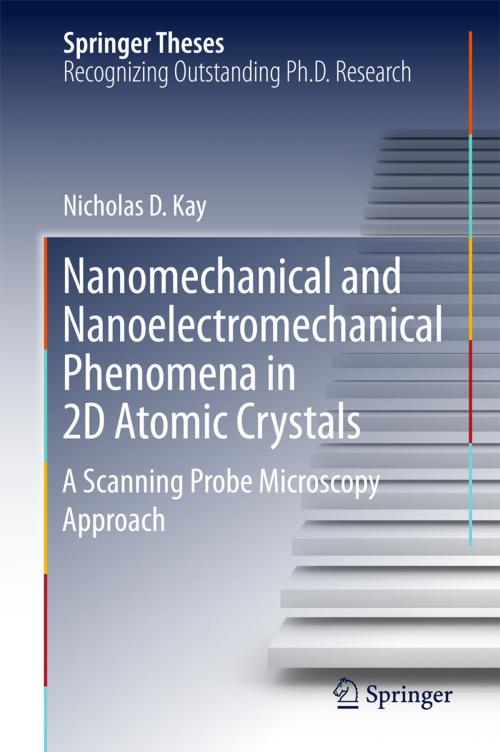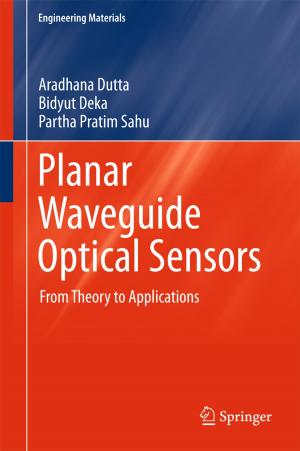Nanomechanical and Nanoelectromechanical Phenomena in 2D Atomic Crystals
A Scanning Probe Microscopy Approach
Nonfiction, Science & Nature, Technology, Nanotechnology, Science, Physics, Solid State Physics| Author: | Nicholas D. Kay | ISBN: | 9783319701813 |
| Publisher: | Springer International Publishing | Publication: | November 27, 2017 |
| Imprint: | Springer | Language: | English |
| Author: | Nicholas D. Kay |
| ISBN: | 9783319701813 |
| Publisher: | Springer International Publishing |
| Publication: | November 27, 2017 |
| Imprint: | Springer |
| Language: | English |
This thesis introduces a unique approach of applying atomic force microscopy to study the nanoelectromechanical properties of 2D materials, providing high-resolution computer-generated imagery (CGI) and diagrams to aid readers’ understanding and visualization. The isolation of graphene and, shortly after, a host of other 2D materials has attracted a great deal of interest in the scientific community for both their range of extremely desirable and their record-breaking properties. Amongst these properties are some of the highest elastic moduli and tensile strengths ever observed in nature. The work, which was undertaken at Lancaster University’s Physics department in conjunction with the University of Manchester and the National Physical Laboratory, offers a new approach to understanding the nanomechanical and nanoelectromechanical properties of 2D materials by utilising the nanoscale and nanosecond resolution of ultrasonic force and heterodyne force microscopy (UFM and HFM) – both contact mode atomic force microscopy (AFM) techniques. Using this approach and developing several other new techniques the authors succeeded in probing samples’ subsurface and mechanical properties, which would otherwise remain hidden. Lastly, by using a new technique, coined electrostatic heterodyne force microscopy (E-HFM), the authors were able to observe nanoscale electromechanical vibrations with a nanometre and nanosecond resolution, in addition to probing the local electrostatic environment of devices fabricated from 2D materials.
This thesis introduces a unique approach of applying atomic force microscopy to study the nanoelectromechanical properties of 2D materials, providing high-resolution computer-generated imagery (CGI) and diagrams to aid readers’ understanding and visualization. The isolation of graphene and, shortly after, a host of other 2D materials has attracted a great deal of interest in the scientific community for both their range of extremely desirable and their record-breaking properties. Amongst these properties are some of the highest elastic moduli and tensile strengths ever observed in nature. The work, which was undertaken at Lancaster University’s Physics department in conjunction with the University of Manchester and the National Physical Laboratory, offers a new approach to understanding the nanomechanical and nanoelectromechanical properties of 2D materials by utilising the nanoscale and nanosecond resolution of ultrasonic force and heterodyne force microscopy (UFM and HFM) – both contact mode atomic force microscopy (AFM) techniques. Using this approach and developing several other new techniques the authors succeeded in probing samples’ subsurface and mechanical properties, which would otherwise remain hidden. Lastly, by using a new technique, coined electrostatic heterodyne force microscopy (E-HFM), the authors were able to observe nanoscale electromechanical vibrations with a nanometre and nanosecond resolution, in addition to probing the local electrostatic environment of devices fabricated from 2D materials.















